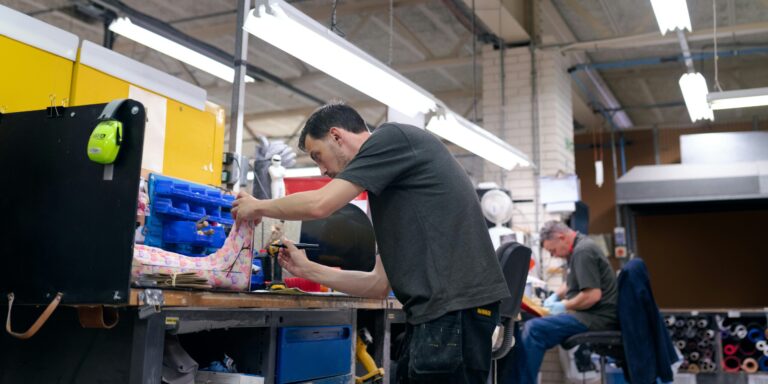U.S. business activity posted a marked rebound in August, driven by the strongest surge in manufacturing orders seen in a year and a half. According to a flash survey by S&P Global, new factory orders rose at their fastest pace since early 2024, pointing to fresh momentum in the industrial sector and signaling renewed confidence across the broader economy.
The uptick offers a much-needed boost at a time when policymakers and businesses are navigating persistent questions about the pace of economic growth, the direction of interest rates, and the lingering effects of inflation. Analysts noted that the improvement reflects a convergence of several key factors: supply chain disruptions that plagued industries throughout 2022 and 2023 have largely eased, consumer demand remains steady even in the face of higher borrowing costs, and companies are increasingly integrating advanced technologies into production processes.
The manufacturing recovery is especially meaningful because it has historically acted as a bellwether for the broader economy. Sectors such as heavy equipment, electronics, and consumer goods are showing renewed activity, with many producers reporting healthier order books and improving export conditions. The rebound comes after several months of sluggish output, which raised concerns about the potential for a manufacturing-driven slowdown. August’s data suggests that those fears may now be easing.
Read Also: https://nvtoday.com/nevada-immigrant-coalition-cancels-lobby-day-amid-ice-activity/
For Nevada, where supply chain operations and export-driven industries are playing a larger role in the state’s growth, the uptick in industrial activity provides indirect benefits. Las Vegas, known primarily for tourism and entertainment, has been steadily diversifying its economic base. Rising demand for goods and industrial production in other parts of the country can create new opportunities for Nevada-based logistics, warehousing, and service providers, strengthening regional economic resilience.
Nationally, the rebound in factory orders is being interpreted as a sign of stabilization after a volatile two-year stretch. While inflationary pressures have moderated compared to their peaks in 2022, companies are still adjusting to an environment of higher financing costs. The Federal Reserve has hinted at a gradual recalibration of monetary policy, weighing whether to maintain restrictive interest rates or begin easing to support long-term growth. Stronger industrial performance in August will likely feed into those deliberations.
Economists caution, however, that while the August data is encouraging, the recovery is not yet complete. Input costs remain elevated for many firms, labor shortages continue in specialized trades, and global demand conditions remain uneven. Geopolitical uncertainty also poses risks to export markets, particularly in Europe and Asia, where economic growth has been uneven. Nevertheless, the August report is being welcomed as a signal that the U.S. economy is proving more resilient than some feared earlier in the year.
Business leaders are echoing cautious optimism. Many companies are reporting renewed willingness to invest in equipment upgrades, supply chain diversification, and workforce training. The integration of artificial intelligence and automation tools into manufacturing lines is also helping firms maintain productivity gains while managing costs. These structural improvements suggest that the manufacturing sector may be entering a phase of sustainable growth rather than a short-lived rebound.
For workers, the renewed momentum could translate into stronger job security and potentially more hiring in industrial hubs. Manufacturing employment had been under pressure during recent downturns, but with orders increasing, the need for skilled labor could grow in the months ahead. While wage pressures remain a concern for employers, they are also a reflection of a labor market that continues to show resilience.
The August rebound in business activity reinforces the idea that the U.S. economy remains adaptable in the face of challenges. With the semiquincentennial approaching in 2026, the manufacturing sector’s recovery offers a reminder of America’s longstanding ability to innovate, adjust, and rebound from periods of uncertainty. If current trends hold, the industrial sector may once again serve as a foundation for broader economic expansion.


